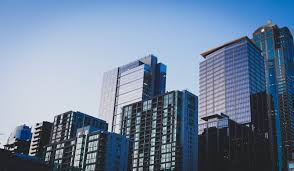Emerging trends in real estate are increasingly focusing on modernized buildings. Developers and buyers are prioritizing properties with updated designs, smart technologies, and sustainable features. These changes reflect evolving lifestyles and the growing demand for functional, energy-efficient spaces.
Modernized buildings offer a wide range of advantages for homeowners. They often include smart home systems, energy-efficient appliances, and open-concept layouts that make living spaces more flexible. Buyers are drawn to properties that combine comfort, style, and practicality.
One key trend is the integration of technology in residential and commercial buildings. Smart lighting, automated climate control, and security systems are becoming standard in many modernized properties. These features not only enhance convenience but also improve energy efficiency, which appeals to environmentally conscious buyers.
Sustainability is another major driver in real estate modernization. Buildings with solar panels, rainwater harvesting systems, and eco-friendly materials are attracting attention from both developers and buyers. These environmentally responsible designs reduce utility costs and promote long-term savings while contributing to a greener urban landscape.
Urban areas are witnessing significant growth in modernized residential buildings. Developers are renovating older structures or constructing new buildings with contemporary designs and advanced amenities. High-rise apartments, mixed-use developments, and smart condos are examples of properties meeting modern lifestyle demands.
Experts note that modernized buildings also influence the commercial real estate sector. Office spaces, retail centers, and co-working hubs are being upgraded to include energy-efficient lighting, flexible layouts, and advanced HVAC systems. Companies recognize that modern facilities enhance productivity and attract top talent.
Another trend is the focus on wellness and lifestyle in building design. Developers are incorporating features such as fitness centers, green rooftops, outdoor recreational areas, and community spaces. These enhancements promote healthier living and stronger social connections among residents.
The COVID-19 pandemic has accelerated interest in modernized buildings. Remote work and hybrid office models have shifted demand toward properties with home offices, flexible spaces, and reliable internet connectivity. Buyers and tenants increasingly value properties that can accommodate both work and leisure efficiently.
Real estate professionals emphasize the importance of location and infrastructure in modernized buildings. Properties in accessible urban neighborhoods with nearby transportation, schools, and amenities remain highly sought after. Modernized features are most effective when combined with convenient and connected locations.
Market analysts predict that the trend toward modernized buildings will continue in the coming years. With younger generations entering the housing market and technology advancing rapidly, demand for properties with integrated smart solutions and sustainable designs is expected to grow.
Investors are also showing interest in modernized buildings. Renovated properties with updated features can command higher rental rates and resale values. This has led to increased investment in both residential and commercial modernization projects across major cities.
Overall, the real estate industry is adapting to changing consumer preferences. Modernized buildings, with their combination of technology, sustainability, and lifestyle amenities, are shaping the future of urban living. Developers, investors, and homeowners are all recognizing the value of these properties in today’s competitive market.
For buyers and tenants, modernized buildings offer more than just aesthetic appeal. They provide convenience, efficiency, and a higher quality of life. As the market evolves, properties with smart, sustainable, and well-designed spaces are expected to dominate both residential and commercial real estate sectors.


